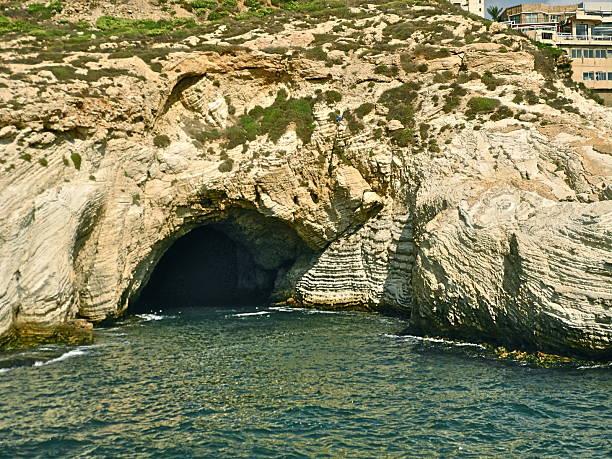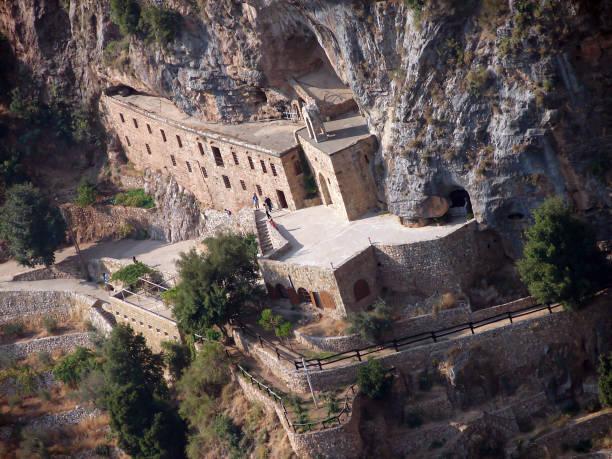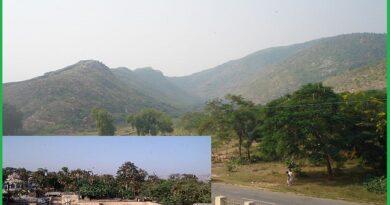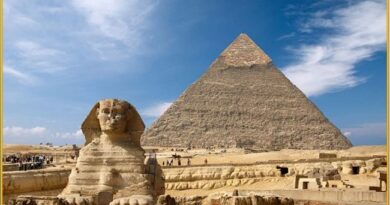The Secret History Of a Hidden Cave-Jeita Grotto Lebanon
Jeita Grotto Lebanon
Jeita Grotto is a system of limestone caves located in the Nahr al-Kalb valley in Lebanon, about 18 kilometers north of Beirut. It consists of two separate but interconnected limestone caves. Jeita Grotto cave features a 600-meter walkway that winds through a series of underground chambers and passageways. The chambers are filled with beautiful rock formations, including stalactites, stalagmites, and columns, as well as an underground river that flows through the cave. The cave is known for its stunning natural beauty and is also home to several species of bats and other wildlife. It is a popular tourist attraction and a natural wonder of Lebanon. Travelers to Jeita Grotto can enjoy a boat ride on the underground river, which is lit up by colorful lighting or take a walk through the lower gallery to marvel at the natural beauty of the cave.
Jeita grotto location-The Jeita Grotto is located in the Keserwan-Jbeil district of Lebanon, about 18 kilometers north of the capital city of Beirut. The grotto is situated in the Nahr al-Kalb valley and is part of the Jeita village. The cave system is carved into the limestone rock of the Lebanon mountain range. The Jeita Grotto is surrounded by a natural park that includes walking paths, gardens, and a small lake. The park is a popular destination for visitors to Lebanon and is considered one of the country’s most important natural landmarks. The grotto and surrounding park are open to visitors year-round, except during certain holidays and special events.

Jeita grotto Geology
The limestone rock that makes up the cave system was formed during the Jurassic period, about 150-200 million years ago. The rock is made up of fossilized marine organisms, such as shells and coral, that were deposited on the sea floor and then uplifted over time to form the mountains of Lebanon. As rainwater and snowmelt percolate through the limestone, they pick up carbon dioxide from the air and form a weak carbonic acid. This acid reacts with the calcium carbonate in the limestone rock and slowly dissolves it, forming cavities and passageways. Over the years, the water flowing through the cave system has formed a variety of formations, including stalactites, stalagmites, columns, and flowstones. These formations are created when mineral-rich water drips or flows through the cave and deposits calcite or other minerals on the cave surfaces.
Also read- Babele-An Unusual Rock feature in the Bucegi Plateau Romania
How was the Jeita grotto Formed? The formation of Jeita Grotto, like most limestone caves, is a result of geological processes that occurred over millions of years. The cave was formed by the dissolution of limestone rock by acidic water. The water enters the rock through cracks and fissures, and as it passes through the limestone, it dissolves the rock, creating passages, chambers, and other features.
Jeita grotto caves
The Jeita Grotto consists of two separate but interconnected limestone caves, the upper and lower galleries. The lower gallery is the most famous and is open to visitors, while the upper gallery is accessible only to experienced spelunkers and scientists. The lower gallery features a 600-meter walkway that winds through a series of chambers and passageways, allowing visitors to marvel at the stunning natural formations of the cave. These include stalactites, stalagmites, columns, and draperies, which are illuminated by colorful lighting that enhances their beauty. The lower gallery also features an underground river, which is the highlight of the cave. Visitors can take a boat ride on the river to explore the cave and admire the magnificent rock formations from a different perspective.

The upper gallery is much longer than the lower gallery and features a vast network of tunnels and chambers that extend over several kilometers. It is closed to visitors, but experienced spelunkers and scientists can access it to study the geological formations and explore the cave system. The Jeita Grotto caves are renowned for their stunning natural beauty, and the site has won numerous awards and recognitions for its outstanding features. The caves are home to a unique ecosystem of flora and fauna, including several species of bats, which can be observed during certain times of the year. Overall, the Jeita Grotto caves are a must-visit destination for anyone traveling to Lebanon, offering a fascinating glimpse into the country’s geological history and natural beauty.
Jeita grotto tour
Visitors can explore Jeita Grotto Lebanon through a guided tour, which takes them through the lower gallery and on a boat ride along the underground river. The tour guide provides information about the cave’s geology, history, and ecology. The tour starts with a cable car ride that takes visitors to the upper entrance of the cave. From there, visitors walk down a 100-meter ramp to reach the entrance of the lower gallery. The lower gallery features a well-lit walkway that is easy to navigate, with handrails and steps in some places to aid visitors in exploring the cave. A guided tour of the Jeita Grotto is a fascinating and educational experience that provides visitors with a unique insight into Lebanon’s geological history and natural beauty.

Jeita grotto walkway- The Jeita Grotto Lebanon features a well-maintained and easily accessible walkway that takes visitors through the cave system. The walkway is made of concrete and features steps and railings in some areas to help visitors navigate the terrain. The walkway is designed to showcase the beauty of the cave while also protecting its fragile ecosystem. Visitors are asked to stay on the designated path and avoid touching or disturbing the formations in the cave. The walkway is well-lit and features spotlights that highlight some of the most impressive formations in the cave, such as the stalactites, stalagmites, and flowstones.
Best time to visit jeita grotto
The Jeita Grotto Lebanon is open to visitors year-round, but the best time to visit is during the spring or fall when the weather is mild and comfortable. During these seasons, temperatures are moderate, and there is less chance of rainfall, making it an ideal time to explore the caves and enjoy the surrounding scenery. The summer months of June through August can be very hot and humid, with temperatures sometimes reaching up to 35°C. This can make it uncomfortable to explore the caves, and the site can also be crowded with tourists. However, if you do decide to visit during the summer, it is best to go early in the morning or late in the afternoon when the temperatures are cooler. It’s also worth noting that the cave is closed on Mondays, and on some public holidays. Therefore, it’s best to check the opening hours and schedule in advance before planning your visit.

How to get to jeita grotto
Jeita Grotto is located in the Keserwan-Jbeil district of Lebanon. There are several public buses that run from Beirut to Jeita Grotto, including the number 51 and number 52 buses. These buses depart from the Charles Helou bus station in Beirut and take about 30-45 minutes to reach Jeita Grotto. Many tour operators offer guided tours to Jeita Grotto as part of a larger itinerary. These tours often include transportation from your hotel or a designated meeting point, as well as a guided tour of the cave.



